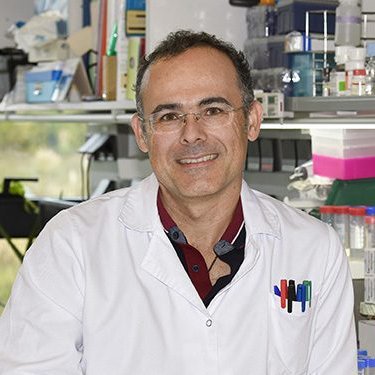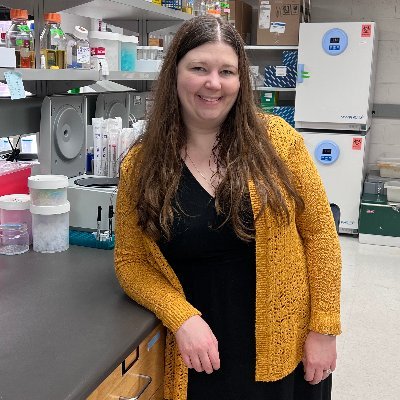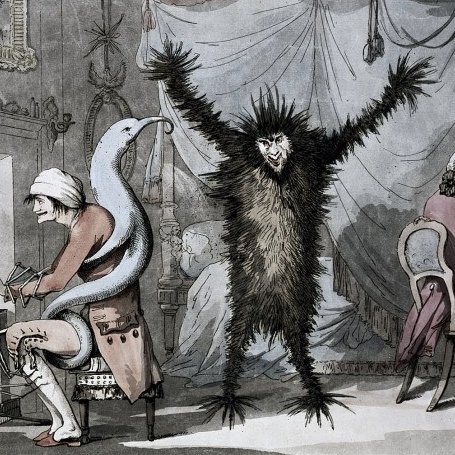
Victor J. Torres
@TorresVJ_Lab
Followers
5K
Following
5K
Media
95
Statuses
3K
Professor and scientist fascinated by infectious diseases, host-microbe interactions and bacterial infections. Views my own 🇵🇷 #CienciaBoricua #MacFellow
Memphis, TN
Joined January 2019
A community-acquired #MRSA strain emerged ~2009 in Brooklyn, New York that has become a major cause of skin infections in the US. @robulrichID & team @nyugrossman now discover a prophage-encoded methyltransferase that increases bacterial virulence by promoting biofilm formation
2
1
18
Delighted to announce that The Vibrio Conference will be back next year! The International Meeting on the Biology of Vibrios will be held in Berlin in September 13-16, 2026. See you there Vibriologists! https://t.co/5aeI0Ehl3E
event.fourwaves.com
0
10
27
The Host-Microbe Interactions Dept. representing @StJudeResearch at the amazing Microbial Pathogenesis and Host Response meeting at @cshlnews
0
3
35
St. Jude Children's Research Hospital has been named to Forbes' 2025 list of America's Best Employers for New Grads. Proud to have a workplace where new grads can excel and make a difference. https://t.co/G72OYzGIj7
0
4
21
Join the CHOP Microbiome Center as a Research Technician IV! We are seeking a motivated individual with hands-on experience in next-generation sequencing (NGS) to support our innovative microbiome research.
0
3
5
Our #CryoET story on how a top antimalarial drug candidate perturbs the native malarial translation machinery is out @NatureSMB🥳 https://t.co/5SaPnwQ4zf Massive team effort led by @leonie_anton @mehsehret @Wenjing_Cheng_ in collaboration with @DziekanJerzy @CowmanAlan #teamtomo
6
43
200
Our NoA just dropped for our NIGMS MIRA (R35), we are hiring a postdoc at @StJudeResearch Interested in antibiotics or covalent inhibitors then contact me at Daniel.Blair@stjude.org with a CV and cover letter. Prior work : https://t.co/6tUOk9GkIN
https://t.co/bq61rTilmv
0
6
11
📢 Job alert! The Structural Microbiology Laboratory ( https://t.co/as2mdUrPZp) has two new openings! We are looking for a PhD student and a Research Technician to join our team. Project: "Structure-function studies of Type VI secretion system toxins". https://t.co/mzKTxFRh0E
0
12
28
If you want to know more, at the end of the article there is a link to a MicroTalk that yours truly had with @realKarlKlose on Vibrio vulnificus.
Vibrio vulnificus, a so-called “flesh-eating bacterium,” causes severe wound infections. What are the mechanisms behind its ability to destroy host tissues—and why does it destroy them at all?
2
4
14
What has evolution taught us about immunity? 🧬🦠 #NASmember K. Heran Darwin of @nyugrossman explores how Mycobacterium tuberculosis has shaped human defenses—and what this means for future cures. Watch her Research Briefing at the #NAS162 annual meeting: https://t.co/7Koaaua99H
0
5
9
Attend the 2025 Bringing Chemistry to Medicine Symposium to learn from leading experts in transcription, chromatin regulation, computational biology and chemical biology. Registration is free and available both in-person and virtually.
1
10
16
Deadline this week on 7/17 at 3 pm EASTERN for Investigators in the Pathogenesis of Infectious Disease: https://t.co/42kTshGCSs
#bwfpath
0
2
1
🚨 We’re hiring! 🚨 Come work with us at the University of Iowa on Orientia tsutsugamushi—a fascinating intracellular pathogen. Projects include building genetic tools + uncovering how effectors hijack host cell cycle + centrosome function. Please share! 📩 mary-weber@uiowa.edu
0
8
13
One week until deadline 7/17 at 3 pm EASTERN for Investigators in the Pathogenesis of Infectious Disease: https://t.co/42kTshGCSs
#bwfpath
0
1
1
Answers to two waaaaay too frequently asked questions: 1. No, associate professors may not apply. This is a career development program focused on assistant professors. 2. Yes, proposed work should focus on the pathogenesis of infectious disease.
0
1
1
11/11 We would like to thank all our collaborators and funding sources including @NIAIDNews and @StJudeResearch. Diane was supported by The Pew Latin American fellows program in the biomedical sciences @pewhealth.
0
1
3
10/11 We hope this model helps accelerate S. aureus research by overcoming the species specificity that has plagued the use of human isolates in laboratory mice.
1
0
1
9/11 Lastly, we established that vaccinating mice with LukMF’ elicits a potent protective response that safeguards the host from infection mediated skin pathology.
1
0
1
8/11 Mice lacking CCR1, or mice temporally depleted from neutrophils, exhibit reduced infection-mediated skin pathology and bacterial burdens.
1
0
1













